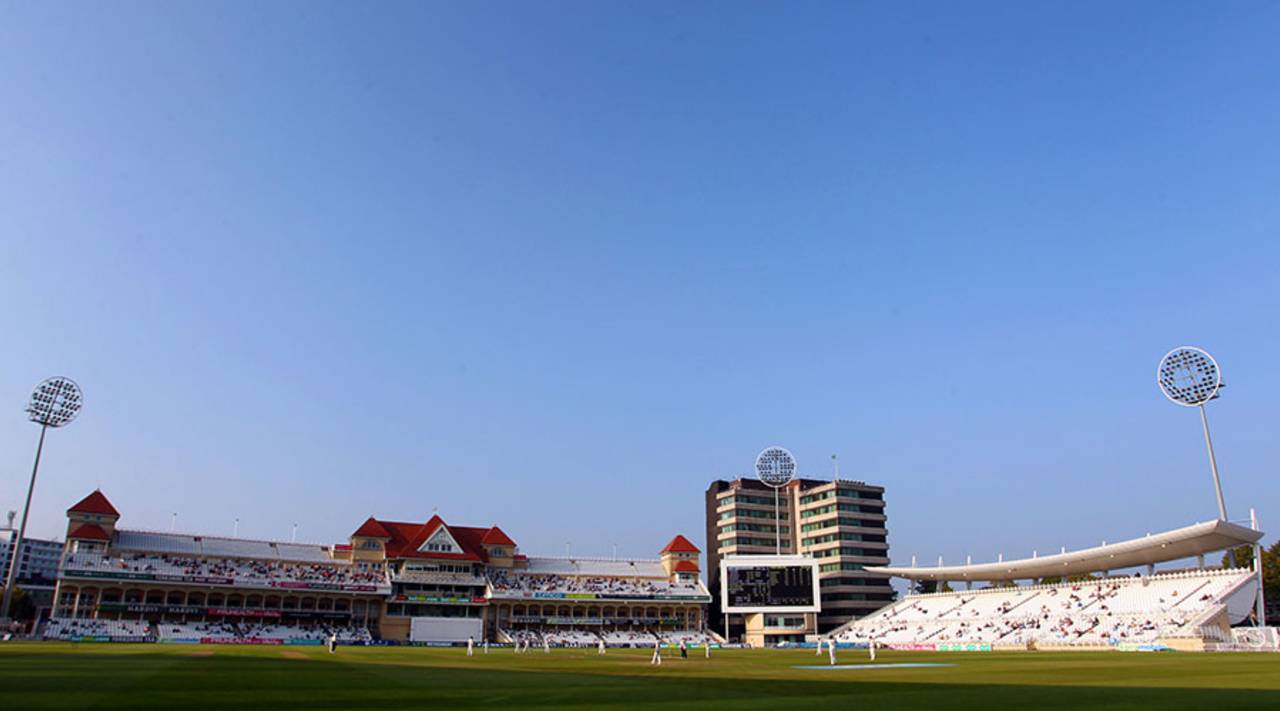One of the most entrancing stories of world cricket during my lifetime has been the rise and rise of Sri Lankan cricket. Their successes appeal to the romantic in us all. That such a small, seemingly idyllic, teardrop-shaped island in the Indian Ocean has, since its elevation to Test status in 1981, produced a conveyor belt of batsmen with superb technique allied to visible spirit, nous and courage, is remarkable in itself. In the last generation, however, this has been complemented by some of the most entertaining, idiosyncratic and compelling bowling the world has ever seen, featuring the likes of Lasith Malinga, Rangana Herath and, of course, the great Muralitharan.
In their pre-Test incarnation of Ceylon, Sri Lanka produced a cricketer who has been somewhat overshadowed by these cricketing giants of recent years.
Gamini Goonesena represented Nottinghamshire in county cricket for 11 seasons, on and off, with much success. I was too young to have watched him, and only recall his contributions as a summariser on Test Match Special on early Sri Lankan tours of England. Nevertheless, a cursory examination of the record books reveals an impressive all-round cricketer, who may just have been one of the best cricketers that the island has ever produced and whose contribution bears a second examination.
Goonesena was a highly skilled legbreak bowler with excellent control of line and length, honed by endless hours of practice. Richie Benaud recalls that he was "a big spinner of the leg break and had a decent top-spinner and googly". As a batsman, he may not have been prolific, but he was a meticulous and organised predominantly back-foot player. Nearly 700 first-class wickets and nearly 6000 first-class runs are, however, a testament to his all-round abilities. In fact, he was probably the best player ever produced by Ceylon. His captaincy was said to be outstanding too. His team-mate Ian Pieris claims that his charismatic captaincy was "head and shoulders above his contemporaries in England at a time when there were captains in the counties such as Peter May, Colin Cowdrey and Cyril Washbrook".
A legspinner of some repute, Goonesena registered to play for Notts in 1952, along with a fellow leggie, the Australian Bruce Dooland. However, he needed to wait until the following year while serving the required qualification period. As it happened, Notts had to share his services in his early years in England, because, like his countryman Kumar Sangakkara, his talents were not confined to the cricket field alone. Although he had originally headed to England in his early twenties with the aim of becoming a pilot at RAF Cranwell, he abandoned this idea and instead took up a place at the University of Cambridge to study law.
Whilst obtaining his law degree, he became the first Asian to captain Cambridge (Ted Dexter was his vice-captain), and in 1957, with his side struggling at 80-4, he hit 211, which remains the highest individual innings by a Cambridge batsman in the varsity match, and is still the only double hundred made by a Sri Lankan at Lord's. His partnership of 289 with Geoffrey Cook also remains the highest seventh-wicket partnership at Lord's in first-class cricket. After his four-wicket haul in Oxford's second innings, Wisden reported "…Goonesena, by reason of his splendid batting and his bowling in the second innings, was the matchwinner…The Cambridge captain and his men received the ovation they deserved as they left the field".
Goonesena had taken up legspin only because, as he wrote in his 1959 book, Spin Bowling, "I was the smallest boy in my form at school and it wasn't much use trying to bowl fast - the bigger boys could do it so much better and more successfully". Yet, his career produced 674 wickets at 24.37. Although at first he struggled to adapt to English conditions, Goonesena achieved "the double" in 1955 (1380 runs and 134 wickets) and 1957 (1156 runs and 110 wickets). He also became the only man from either Oxford or Cambridge to have scored 2000 runs and taken 200 wickets, a feat which will, of course, now never be equalled.
A peripatetic childhood had taken Goonesena from Ceylon to Kenya, before he returned to Ceylon where he starred for Royals in their classic rivalry with St.Thomas - the second-longest uninterrupted cricket rivalry in the world. He then headed to England in his early twenties, appearing as a professional for Notts and an amateur for Cambridge.
His wanderings continued and later took him to Australia where he played for New South Wales, mostly as a locum for Richie Benaud, helping them win the Sheffield Shield in 1960-61. He also played grade cricket for Waverley in Sydney (as did his son), whilst, off the field, he worked for the Ceylonese Embassy and the Ceylon Tea Board.
After his playing days, Goonesena used his acquired knowledge and experience to represent Sri Lanka on the ICC and to manage the Sri Lankan Test team on their 1982 tour of India.
All-round cricketer, law student, businessman, diplomat, cricket administrator, team manager - Goonesena was both a trailblazer and a Renaissance man for Sri Lankan cricket.
Want to be featured on Inbox? Send your articles to us here, with "Inbox" in the subject line. Rob Collins is a blogger and has been a regular at Trent Bridge for over thirty years. Aside from spending an unhealthy amount of time waiting for the rain to stop, his passions are those of the archetypal middle-aged man: foreign travel, running, Scandi noir and trying to not to think too much about his awful football team.
